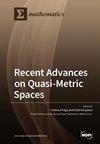合作预防性维护保修期到期后的离散随机可再生更换
IF 2.3
3区 数学
Q1 MATHEMATICS
引用次数: 0
摘要
以先进的数字技术为重要支撑,许多学者和研究人员将任务周期融入保修阶段,提出了各种随机保修模式。然而,现有的这些保修模式仅从制造商的主观角度出发进行设计,忽视了消费者的某些需求。例如,它们忽视了保修范围的广泛性、追求可靠性的提高而不仅仅是最小维修量,以及限制维修延迟的需求。针对消费者的这些要求,本文提出了一种新颖的随机协同预防性维护保修与维修时间阈值(RCPMW-RTT)。该模式包含了由制造商和消费者共同设计的条款,以满足消费者的特定需求,从而克服了现有保修模式的局限性。引入维修时间阈值的目的是限制故障维修的时间延迟,并补偿消费者的任何损失。利用概率论,从成本和时间的角度对 RCPMW-RTT 进行了评估,并通过分析关键参数得出了相关变体。作为 RCPMW-RTT 的示例,提出并模拟了两种随机更换策略,即离散随机可再生后置更换 (DRRBR) 和离散随机可再生前置更换 (DRRFR),以确保 RCPMW-RTT 到期后的可靠性。在这两种策略中,产品替换都是在出现第一个极端任务周期或达到非极端任务周期数量限制时触发的,以先到者为准。概率论用于提出这两种政策的成本率,以确定决策变量的最佳值。最后,对 RCPMW-RTT 进行了数值分析,以揭示隐藏的变化趋势和机制;还对 DRRBR 和 DRRFR 进行了数值分析。数值结果表明,所提出的随机更换策略是可行的,也是唯一的;随着维护质量的提高,保修期后覆盖范围内的更换时间也会增加,而且通过设置较小的维修时间阈值可以降低成本率。本文章由计算机程序翻译,如有差异,请以英文原文为准。
Discrete Random Renewable Replacements after the Expiration of Collaborative Preventive Maintenance Warranty
With advanced digital technologies as the key support, many scholars and researchers have proposed various random warranty models by integrating mission cycles into the warranty stage. However, these existing warranty models are designed only from the manufacturer’s subjective perspective, ignoring certain consumer requirements. For instance, they overlook a wide range of warranty coverage, the pursuit of reliability improvement rather than mere minimal repair, and the need to limit the delay in repair. To address these consumer requirements, this paper proposes a novel random collaborative preventive maintenance warranty with repair-time threshold (RCPMW-RTT). This model incorporates terms that are jointly designed by manufacturers and consumers to meet specific consumer needs, thereby overcoming the limitations of existing warranty models. The introduction of a repair-time threshold aims to limit the time delay in repairing failures and to compensate for any losses incurred by consumers. Using probability theory, the RCPMW-RTT is evaluated in terms of cost and time, and relevant variants are derived by analyzing key parameters. As an exemplary representation of the RCPMW-RTT, two random replacement policies named the discrete random renewable back replacement (DRRBR) and the discrete random renewable front replacement (DRRFR) are proposed and modelled to ensure reliability after the expiration of the RCPMW-RTT. In both policies, product replacement is triggered either by the occurrence of the first extreme mission cycle or by reaching the limit on the number of non-extreme mission cycles, whichever comes first. Probability theory is used to present cost rates for both policies in order to determine optimal values for decision variables. Finally, numerical analysis is performed on the RCPMW-RTT to reveal hidden variation tendencies and mechanisms; numerical analysis is also performed on the DRRBR and the DRRFR. The numerical results show that the proposed random replacement policies are feasible and unique; the replacement time within the post-warranty coverage increases as the maintenance quality improves and the cost rate can be reduced by setting a smaller repair-time threshold.
求助全文
通过发布文献求助,成功后即可免费获取论文全文。
去求助
来源期刊

Mathematics
Mathematics-General Mathematics
CiteScore
4.00
自引率
16.70%
发文量
4032
审稿时长
21.9 days
期刊介绍:
Mathematics (ISSN 2227-7390) is an international, open access journal which provides an advanced forum for studies related to mathematical sciences. It devotes exclusively to the publication of high-quality reviews, regular research papers and short communications in all areas of pure and applied mathematics. Mathematics also publishes timely and thorough survey articles on current trends, new theoretical techniques, novel ideas and new mathematical tools in different branches of mathematics.
 求助内容:
求助内容: 应助结果提醒方式:
应助结果提醒方式:


